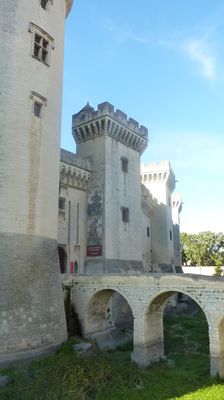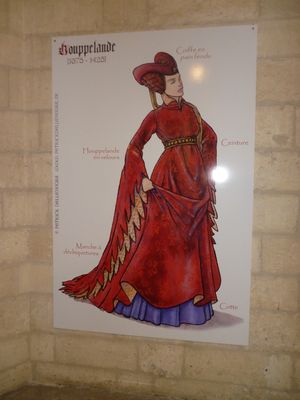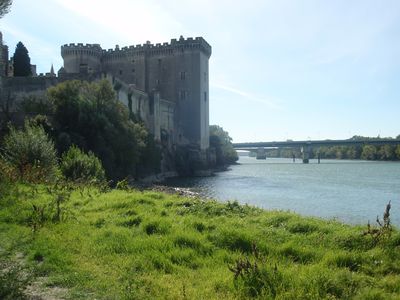TARASCON
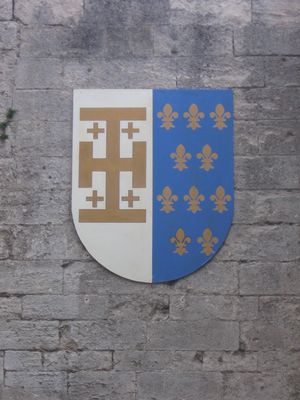 |
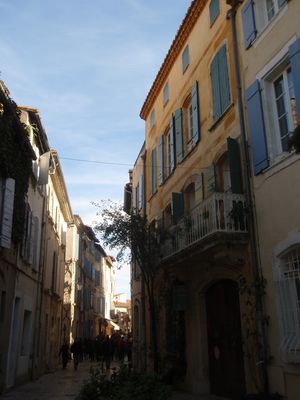 |
Tarascon is located in Provence, 14 miles south of Avignon and 12 miles north of Arles on the east bank of the Rhône River. |
|
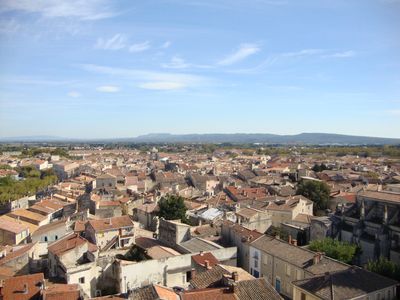 |
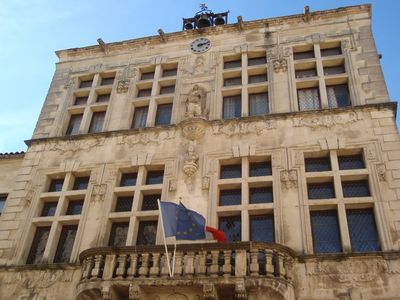 The town hall |
|
|
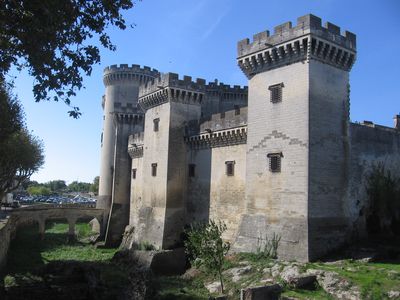 |
|
Built on a limestone rock, the Castle of King Rene is isolated from the city by wide ditches. |
|
It was built from 1400 to 1450 by the Counts of Provence, Louis II and his sons Louis III and Rene I (1409-1480). Rene I, a great patron, writer and lover of Art, decorated the castle in the style of Italian Renaissance. |
 King Rene and his wife Isabella of Lorraine |
It stands as an impregnable fortress...
|
|
|
 |
... as shown by the machicolations (overhanging stone gallery with apertures in the floor through which projectiles could be thrown on assailants)... |
|
 ...and by the loopholes. |
 |
|
|
 |
|
It is hidden inside a magnificent Renaissance Palace pierced with dozens of windows and decorated with a large perforated stair tower. |
|
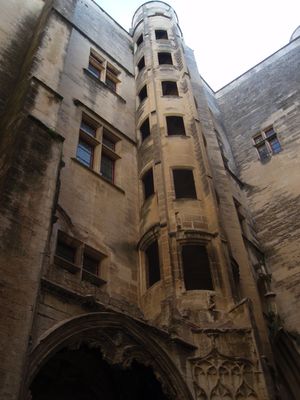 Spiral staircase |
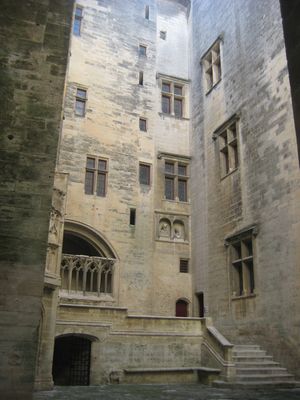 Casement windows underlining the Renaissance style of the Palace |
 |
|
|
|
At that time the Castle of Tarascon was in Provence... |
|
|
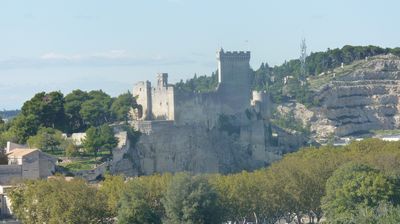 |
...while the Castle of Beaucaire, on the west banks of the Rhône, was in France. |
|
|
|
|
|
 |
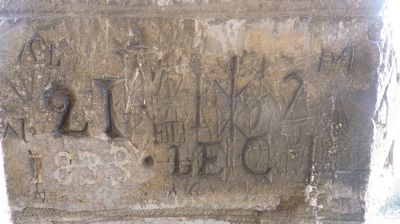 |
Filed under the Historic Monuments in 1840, owned by the state from 1932 to 2007, the Royal Castle of Tarascon is now part of the Heritage City of Tarascon. |
|
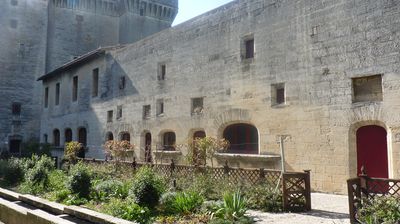 |
 |
| THE LEGEND OF THE TARASQUE AND SAINT MARTHA | |
| This tale, dating back to the 1st century, was compiled in the Middle Ages by Jacques de Voragine in his Golden Legend, during the thirteenth century. This writer described the monster as "a great dragon, half beast and half fish, greater than an ox, longer than a horse, having teeth sharp as a sword, and horned on either side, head like a lion, tail like a serpent, and with two wings on either side, and he could not be beaten with cast of stones nor with any other armour, and was as strong as twelve lions or bears; which dragon lay hiding and lurking in the river, and perished them that passed by and drowned ships." As a matter of fact, one can find very few details about Martha's life in the Bible itself. However, she stands for the victory of Christian faith against evil. Provencal tradition records the story of the monster (the "Tarasque") after which the city was supposedly called Tarascon. St. Martha, who was one of the Lord's servants, descended from royal blood and had, like her sister Mary Magdalene, the suzerain rights over Magdalene, Bethany and Jerusalem. In 48 AD, after the rise of Christ to heaven and when the apostles were scattered throughout the nations, Martha, Mary Magdalene, their brother Lazarus and their companion Maximinus boarded a boat with no sails, no oars, no rudder, as the pagans had taken all the rigging. But a mysterious blast pushed the boat to the shores of Provence in a town now known as "Les Saintes-Maries-de-la-Mer". Martha and his companions went up the Rhone through a region which was then inhabited by pagan tribes. They walked until they arrived in the area of Nerluc, between Arles and Avignon. On both sides of the river, they saw on a great crowd, weeping and moaning. Martha wanted to convert them to her religion but the villagers demanded she should first kill the monster that lived in the woods and terrorised them. |
|
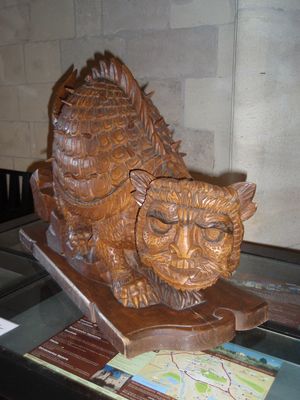 |
The Tarasque was a sort of dragon with six short legs like a bear's, an ox-like body covered with turtle shell, and a scaly tail that ended in a scorpion's sting. It had a lion's head. It was said to come from Galacia (an area in the highlands of central Anatolia in modern Turkey) and to be the offspring of the Onachus and the Leviathan. The king of Nerluc had attacked the Tarasque, but in vain. The Tarasque continued to devastate everything around it and devoured men and beasts, dragging them to its lair. |
Saint Martha had never heard of such horror and such misfortune. She stepped forward, and the multitude looked at her horrified. She had, like her sister, a long brown gown and a blue veil on her head. She wore no ornaments, no jewellery. But she had across tied to her belt. Taking the cross in her right hand, she walked, guided by the bones scattered on the ground. She finally came to a wood, where the monster was having his horrible meal. At the sight he rose, shook his heavy wings and his scaly tail, and uttered a terrible cry that shook the entire landscape. St. Martha brandished the cross in front of it. The dragon lowered its head in an awful way and let her tame it. Then Martha managed to bind it with her belt. |
 |
 |
Eventually she took it to the people who, terrified at the sight of the monster, knocked it out with spears and stones. The Tarasque offered no resistance and died. Saint Martha then preached to the people and converted many of them to Christianity. Sorry for what they had done to the tamed monster, the newly-Christianized townspeople changed the town's name to Tarascon. |
SAINT-MARTHA COLLEGIATE CHURCH |
 |
The citizens erected a new church in honour of Saint Martha and changed the name of the town from Nerluc to Tarascon.
The church became one of the most famous sanctuaries of Provence because of the formal discovery in 1187 of relics of Saint Martha which the people of Tarascon had already venerated for a long time. In 500 A.D., after having besieged Avignon, Clovis got ill and came to pray at the tomb of Saint Martha. He was healed. Other kings of France and Sicily, cardinals, legates, one pope, one pope-to-be (John XXIII) came to pray to the blessed lady of Christ. |
|
| The building is made of two superimposed churches, the crypt which houses the 4th century A.D. sarcophagus of St. Martha... |
|
 |
|
... and the upper church. |
|
 |
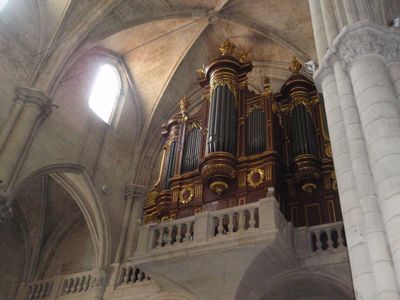 |
More imposing sanctuaries were successively built on the first small Christian chapel: first, after the Saracen invasion, a Romanesque church encompassing the crypt and tomb. Before the altar, we can observe the bust reliquary of St. Martha. |
|
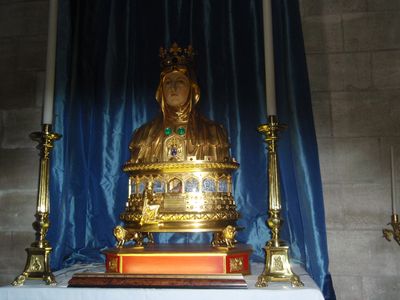 |
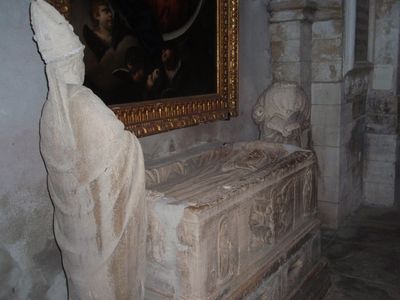 |
Then, in response to the piety of the locals and the influx of pilgrims, the nave was rebuilt in the 13th and mainly the 14th centuries. The 15th century saw the addition of the steeple tower, flying buttresses and a sacristy. In the 17th century, the crypt was restored and two hexagonal chapels were added on each side of the apse. The Church was mixing Gothic and Roman style. |
|
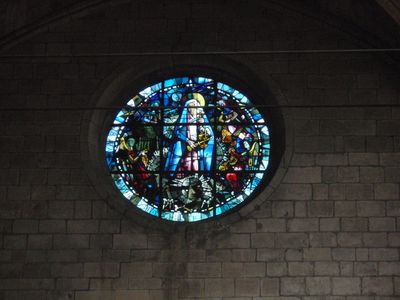 Stained glass representing Saint Martha taming the Tarasque |
|
Tarascon is also well-known for its world-renowned writer Alphonse Daudet. |
|
ALPHONSE DAUDET |
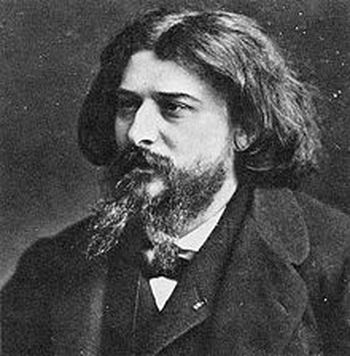 |
Alphonse Daudet was born in Nîmes on July 13th 1840. He went to high school in Lyon and then he became a tutor in a school in Alès. His famous novel Le Petit Chose (1969) was inspired by his painful experience in the job. In 1857, he settled in Paris where his brother Ernest was already living. In 1958, he published a collection of poems: Les Amoureuses. The year after, he met the Provencal poet Frederic Mistral. He wrote for several newspapers including Paris-Journal, L'Univers and Le Figaro. In 1960, Alphonse Daudet became the secretary of the Duke of Morny, which inspired his novel Le Nabab in 1877. During the year 1864, he stayed in Fontvieille for the first time with the Ambroy family. He discovered the windmills on the Fontvieille hills and he was very sensitive to the Provencal landscape which inspired some of his "Lettres de mon Moulin". He reported that the book was a collection of stories told by a shepherd and other local people. The director of the newspaper L'Evénement allowed him to publish his "letters" every week during the whole summer of 1866. |
|
In 1874, Daudet decided to write actual novels like Fromont jeune et Risler aîné mais aussi Jack (1876), La Nabab (1877), Les Rois en exil (1879), Numa Roumestan (1881), L'Immortel (1883).
Although he was a novelist and a playwright (he wrote 17 plays) he was also a famous story-teller: in 1872, he published Tartarin de Tarascon,a mythical character. (See below) In Les Contes du lundi (1873), he told stories about the war between France and Prussia. In 1884, he suffered from a very painful and long disease. His wife collected the notes that he wrote throughout his illness and they were published under the title: La Doulou. On 16 December 1897, at the age of 57, Alphonse Daudet died in Paris, far from his dear Provence. He was buried at the Pierre Lachaise graveyard. |
|
| Daudet's "Tartarin de Tarascon" | |
| The adventures of Tartarin written by Alphonse Daudet (1840-1897) are composed of 3 volumes: -Tartarin de Tarascon (1872) -Tartarin sur les Alpes (1885) -Port-Tarascon (1890) |
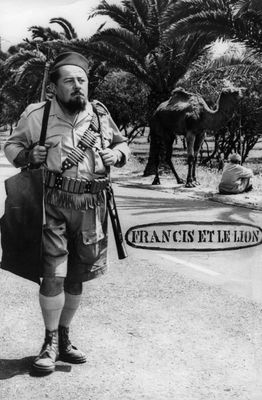 Tartarin is quite a simple-minded man who enjoys boasting and showing off and who is very faithful to human attitudes. |
 |
|
His invented adventures and reputation as a swashbuckler finally force him to travel to a very prosaic Algiers in search of lions. Instead of finding a romantic, mysterious Oriental fantasy land, he finds a sordid world suspended between Europe and the Middle East. And worst of all, there are no lions left.
|
 |
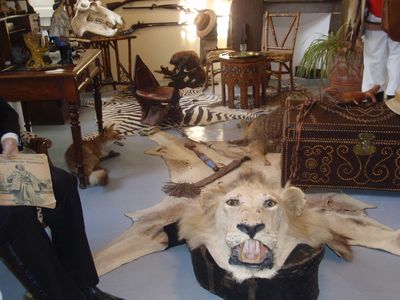 |
This novel is a combination of fantasy, comedy, and eventually, tragedy embodied by Tartarin, a lonesome man who takes refuge in an imaginary world. He is an extravagant but very naive hero who is easily fooled by unscrupulous people. |
THE WINDMILL OF FONTVIEILLE |
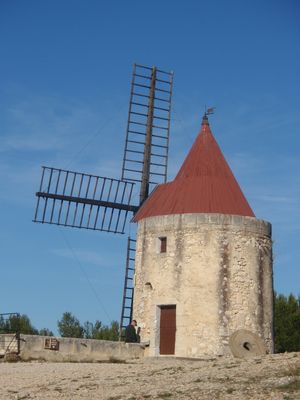 |
We couldn't possibly work on Alphonse Daudet without visiting the famous windmill. Indeed the world famous novelist spent a large part of the end of his life in the Provencal village of Fontvieille.
The windmill outside the village is named after him because, according to the legend, he used to retire there to write his short stories. Actually, the real name of the windmill is "San Peter Mill" or "Moulin Ribet". It was built in 1814 and operated until 1915: indeed, during the First World War, both men and wheat were requisitioned, which meant that the mill definitely stopped working. In 1935, the association "Les amis d'Alphonse Daudet" decided to renovate it and in the mean time, to create a small museum about the writer and his works inside the mill. |
|
